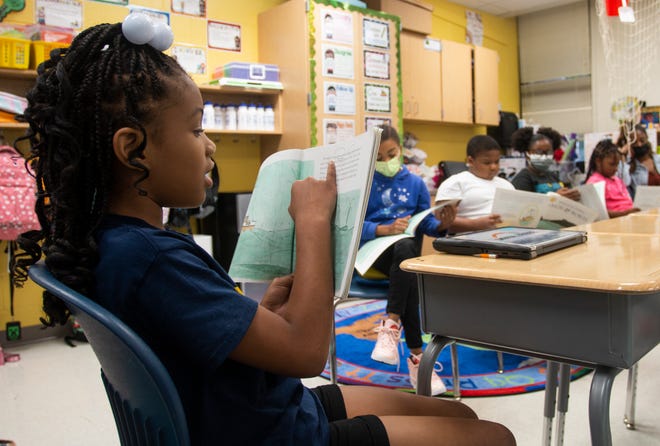

New federal data reveals that 9-year-olds’ reading and math scores have declined significantly across the board since the start of the pandemic.
“This is the largest average score decline in reading since 1990, and the first ever score decline in mathematics,” new results out Thursday from National Center for Education Statistics show.
In other words, no group of high- or low-performing students was spared from a decline in performance by the pandemic and remote schooling.
“The big takeaway is that there are no increases in achievement in either of the subjects for any student group in this assessment. There were only declines or stagnant scores for the nation’s 9-year-olds,” said Peggy Carr, commissioner of the National Center for Education Statistics.
The achievement gap in standardized testing was growing:COVID added fuel to the fire.
The data also confirms the predicted widening of the achievement gap – particularly between Black and white students – during the pandemic. And it shows significant declines in reading and math scores for disadvantaged students, who were most impacted by widespread pandemic-related school closures.
“The achievement gap between white and Black students widened in 2022 because Black students experienced a sharper decline in test scores than their White counterparts,” Carr said. And achievement for Black children is “significantly worse than their counterparts from two years ago,” she said.
“In fact, the declines from this assessment show that students in 2022 are performing at a similar level to two decades ago,” said Carr, adding that the report shows even high-performing student scores declined for the first time in the past decade. “They also represent the first ever decline in mathematics and one of the largest ever declines in reading since the long term trend assessment was first given in the 1970’s.
The National Assessment of Educational Progress is administered by a branch of the federal Education Department that uses the assessment to measure students’ abilities in math and reading. It’s the only test that allows for comparisons across states and across groups of students, over time. The results Thursday are drawn from a nationally representative sample of about 15,000 9-year-olds, Carr said.
Overall, average math scores for 9-year-olds dropped seven points, and average reading scores declined five points between 2022 and 2020.
Other key takeaways from the report:
- Kids who were already the lowest performing lost the most ground: “In both subjects, scores for lower-performing age 9 students declined more than scores for higher-performing students compared to 2020,” the report reads. Scores dropped a whopping 12 points for the lowest-performing students compared to a 3-point drop in high-performing students.
- Black students lost a lot of ground in math, far more than their white peers: “In mathematics, the 13-point score decrease among Black students compared to the 5-point decrease among White students resulted in a widening of the white−Black score gap from 25 points in 2020 to 33 points in 2022.”
- Reading scores for students in urban and suburban settings are starting to meet in the middle: “The score difference between students attending suburban schools and students attending city schools narrowed in reading between 2020 and 2022,” the report says.
The center will release additional results from nationwide tests later this fall.
“These results are sobering. It’s clear that COVID-19 shocked American education and stunted the academic growth of this age group of children,” Carr said. “We don’t make this statement lightly.
“We even consulted our panel of education statisticians and psychometricians, and they agree that no other factor could have had such a dramatic influence on student achievement in a relatively short time period,” Carr said.
Source link






